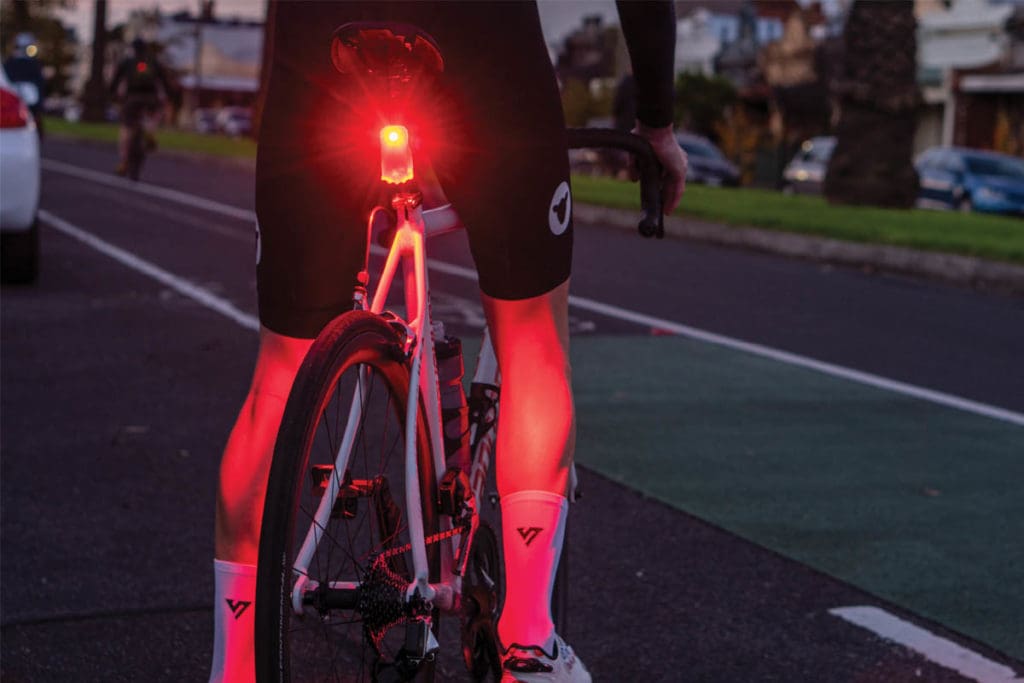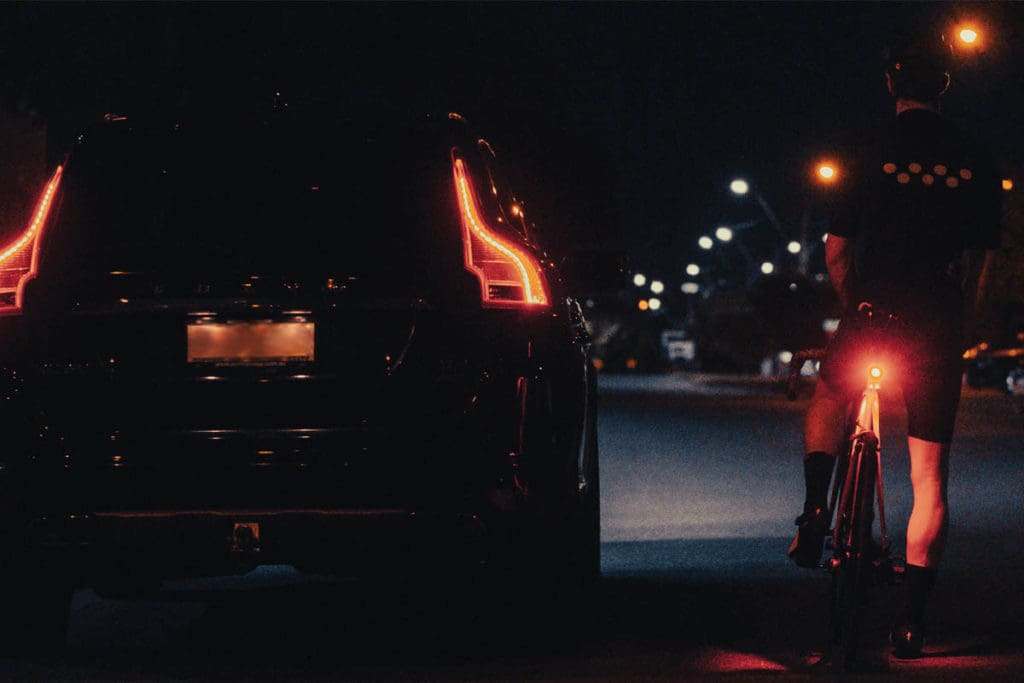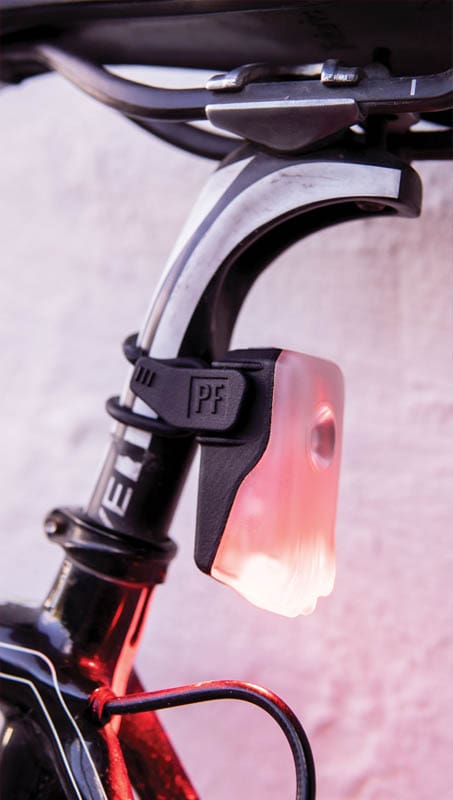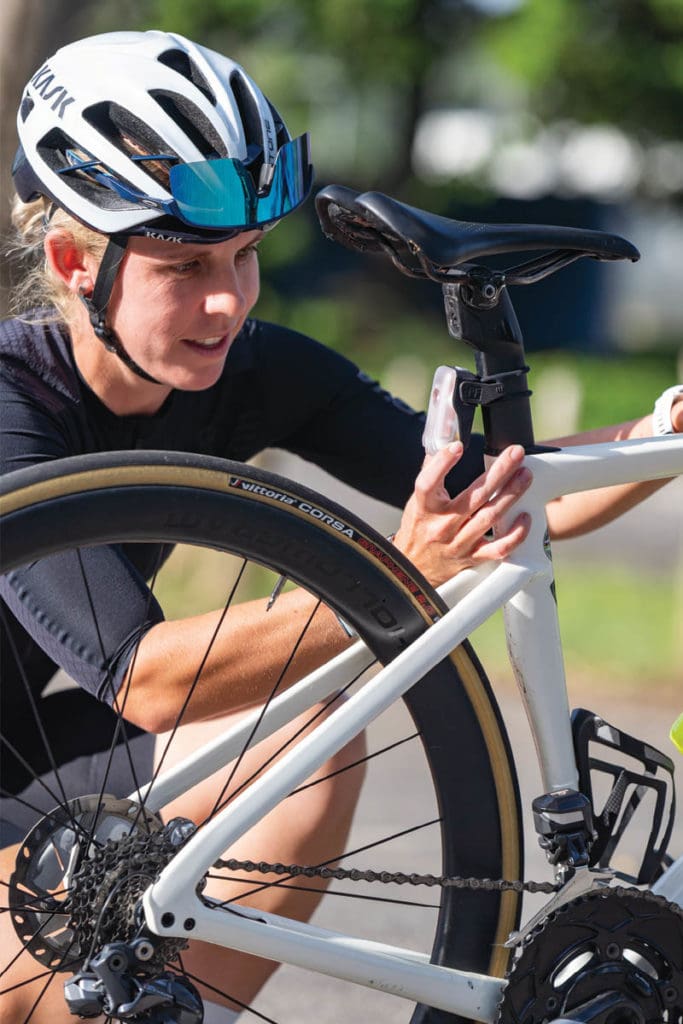Instant Recognition is Key to Flock Success

~ Sponsored Content ~
A trail blazing new bicycle taillight developed in Australia is helping motorists more quickly recognise cyclists at night … and many riders and retailers are swiftly recognising why that’s a great development.
The Flock Light, developed by Melbourne company Flock Project, is the world’s first ‘bio-motion’ rear bike light, directing light onto the rider’s legs to make them easier to see and more readily identifiable as a person.
Company founders Tim Ottaway and Marie Penny say the Flock Light leverages the human brain’s cognitive ability to recognise human movement very quickly, so riders can be seen up to 5.5 times faster than a standard red light.
More importantly, the light’s ability to clearly to show the rider as human can influence motorist behaviour, while also giving motorists a better perception of the distance to the rider and the space they’re occupying on the road.

The Flock Project officially launched the light recently, while its final prototypes are being road tested, and the company is on schedule to begin pre-production early next year.
However, it has already presold more than 700 units and has three retailers ready to add the Flock Light to their product range.
“We’ve been growing a community of followers since 2020, to really test the concept of the Flock Light and its potential as a commercial product,” Tim said.
“It has enabled us to build trust with our future customers, while giving them the opportunity to help us design a bike light for them.”
A Wiser Approach to a Clever Concept
The Flock Light is not the first bike light to focus on biomotion, with existing products located on different parts of the bike or riders, including the pedals and ankles.
But it is the first to be mounted in the same location as a traditional taillight, capitalising on riders’ existing behaviours and mindsets.
“Why can’t the first thing people see be a person riding a bike, instead of an annoying flashing red light.”
It means riders still only have to charge a single taillight and in many ways the Flock Light is very similar to the rear lights they’re accustomed to using.
Tim said during his considerable experience in retail, he saw many wonderfully innovative products that were too far removed from what people were used to and consequently failed to gain significant traction with consumers.
“Getting people to actually adopt those ideas and products – and incorporate them into their behaviours – can be the greatest challenge,” he said.
When Tim first devised the idea of a biomotion light in 2019, during his final year studying industrial design at the Royal Melbourne Institute of Technology (RMIT), he experimented with many different designs and locations for the light.
“The question I was asking myself back in 2019 is ‘why can’t the first thing people see be a person riding a bike, instead of an annoying flashing red light’,” he said.

“Our development process was focused entirely on the rider – both metaphorically and literally. We wanted to humanise the person riding the bike and I had a hundred weird and wonderful sketches of different solutions.
“It’s one thing to see something, it’s another thing entirely to quickly recognise what it is and respond appropriately. There’s a whole host of factors to suggest conventional single-point rear light aren’t as effective as we possibly think they are.”
“Really bright lights can startle or even momentarily blind approaching drivers and can actually antagonise them.”
The Flock Light has three lenses, with a single beam pointing backwards and two directing light forwards and down onto the rider’s legs, effectively making them two large beacons to alert oncoming drivers, while the pedalling motion immediately identifies them as human.
Marie said while the final output of the light is yet to be confirmed, it’s likely to be between 120 and 150 lumen.
“Many other brands are focused on comparing lumen, but what’s more important is how the light is focused and where it’s directed,” she said.
“A lot of our customers are saying while brightness is a good thing to have, really bright lights can startle or even momentarily blind approaching drivers and can actually antagonise them.
“Our rear-facing lens is a very focused spotlight, so it can travel a considerable distance without blinding other road users.

“The Flock Light design also gets a lot of light bouncing around inside the body of the unit, providing strong visibility from each side, along with the fact it lights up the rider’s legs.”
The design has earned the Flock Light two international design awards, as well as the 2020 Australian prize for the global James Dyson Awards, which each year announces a number of national winner.
The Flock Light’s features also include a ‘Flight Time Gauge’ that clearly shows the battery charge level and the time remaining before the charge runs out, to avoid getting caught out by a flat battery.
While the Flight Light’s battery life is still subject to the unit’s eventual finalised settings, it’s expected it will have four modes and a life of between four hours and 30 hours.
In addition, the Flock Light has a simple grip clip system that can be easily clipped on and removed with one hand.
Fitting the unit on the bike seals the USB-c port so the unit is watertight against the constant spray of riding in wet conditions.
Tim and Marie have been working closely with a range of riders to field test their prototypes.
“We’ve tested our Flock Light prototypes with 16 riders and accumulated in excess of 400 hours of testing in real life conditions. We’re getting great reports back and, most importantly, valuable feedback that will be used to make small improvements before we go into mass production.”
The Flock Light will retail for A$119 and is just the first of a range of products Tim and Marie intend to bring to market to foster a safer coexistence of road users.
Further information about the Flock Light is also available at www.projectflock.cc or by following Project Flock on Facebook and Instagram.
